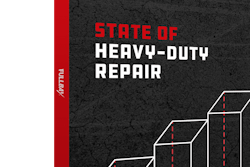Note: This is the third in a series that looks at the diesel particulate filter and maintenance best practices that an impact its lifecycle. The first installment, "Diesel coolant heaters boost DPF performance, reduce engine wear" can be found here. The second, Biodiesel, renewable diesel show DPF and engine performance improvements, can be found here.
The DPF collects upwards of 98% of particulate matter emissions in the form of ash, which is comprised of metallic compounds that originate in the engine oil, fuel, wear metals from the engine, or from dirt in the air the engine consumes. Upwards of 90% of the ash that goes into the DPF is from the lubricant.
Ash and soot buildup – left behind when engine oil is burned during combustion – shrinks the size of the DPF, and causes engine back pressure and excessive regeneration cycles.
“Controlling oil consumption is a principal way to maximize DPF servicing intervals,” said Shell Global Solutions OEM Technical Manager Karin Haumann. “Oil being consumed (i.e. burned) leaves behind an ash residue that comes from the non-combustible, inorganic material that is carried through the exhaust.”
Most ash is produced by phosphorus, zinc, boron and moly additives, and modern engine oils – namely API CJ-4, CK-4 and FA-4 formulations – are regulated to a fewer than 1% ash.










